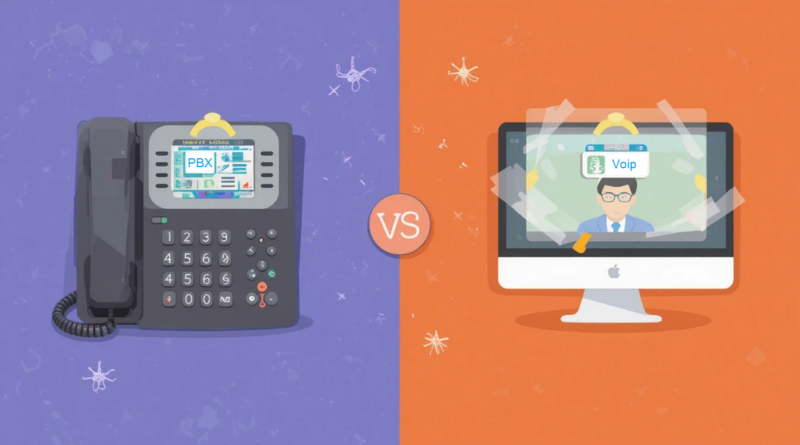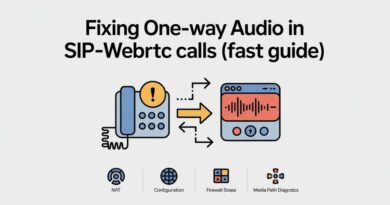PBX vs VoIP: Understanding the Difference for Modern Business
Business communication has changed dramatically over the past two decades. Where companies once relied on bulky on-site Private Branch Exchange (PBX) systems, many are now migrating to flexible Voice over IP (VoIP) solutions. Yet for many decision-makers, the distinction between PBX and VoIP is still blurred.
In this article, we’ll break down what each system is, how they differ, and why understanding the difference matters for your business in 2025.
What Is a PBX?
A Private Branch Exchange (PBX) is a private telephone network used within an organisation. Employees share a set number of external phone lines for making and receiving calls. Traditional PBX systems are hardware-based and installed on-site, requiring ongoing maintenance.
Common PBX features include:
- Call transfer and forwarding
- Voicemail
- Extension management
- Automated attendants
These systems were once the backbone of corporate communications but are now being challenged by cloud-first alternatives.
What Is VoIP?
Voice over Internet Protocol (VoIP) allows voice calls to travel over the internet instead of traditional telephone lines. This means companies can make calls using broadband connections, mobile devices, or browser-based applications.
Advantages of VoIP include:
- Lower call costs, especially for international calls
- High scalability (adding new users is simple)
- Integration with modern tools (CRM, video conferencing, chat)
- Support for mobility and remote work
For a deeper dive, see TechTarget’s VoIP definition.
PBX vs VoIP: Key Differences
| Feature | PBX | VoIP |
|---|---|---|
| Infrastructure | On-premise hardware | Internet/cloud-based |
| Costs | Higher upfront + maintenance | Lower ongoing, subscription-based |
| Scalability | Limited to installed capacity | Virtually unlimited |
| Flexibility | Office-bound | Remote + mobile friendly |
| Security | Physical system control | Encryption and network-based |
A traditional PBX may still appeal to highly regulated industries that prefer in-house infrastructure, but for most businesses, the flexibility of VoIP is a better match for today’s work styles.
The Rise of Hybrid Solutions
Not all companies choose between PBX and VoIP in absolute terms. Many deploy hybrid systems, where an existing PBX integrates with VoIP services. This allows businesses to keep familiar infrastructure while gaining the benefits of cloud telephony.
Projects such as FreeSWITCH and Asterisk provide open-source flexibility for businesses wanting to experiment with hybrid PBX-VoIP setups.
Why It Matters for Your Business
Understanding the difference between PBX and VoIP helps organisations make better investment decisions. If your business is:
- Small to mid-sized → VoIP provides scalability and cost savings.
- Enterprise with legacy systems → A hybrid PBX-VoIP solution may work best.
- Remote-first or distributed → Browser-based VoIP clients are the clear winner.
This is where solutions like Siperb enter the picture. Designed as a WebRTC SIP client, Siperb lets teams connect directly through their browser while integrating seamlessly with SIP or PBX backends. It gives businesses the freedom of VoIP without discarding existing infrastructure.
Conclusion
The PBX vs VoIP debate isn’t about winners and losers — it’s about choosing the right fit for your organisation’s present and future. VoIP offers flexibility, scalability, and lower costs, while PBX still serves businesses that prefer direct hardware control.
For most companies in 2025, however, the internet has already become the backbone of communication. VoIP isn’t just the future — it’s the present.
For more articles like this, visit SoftpageCMS.



